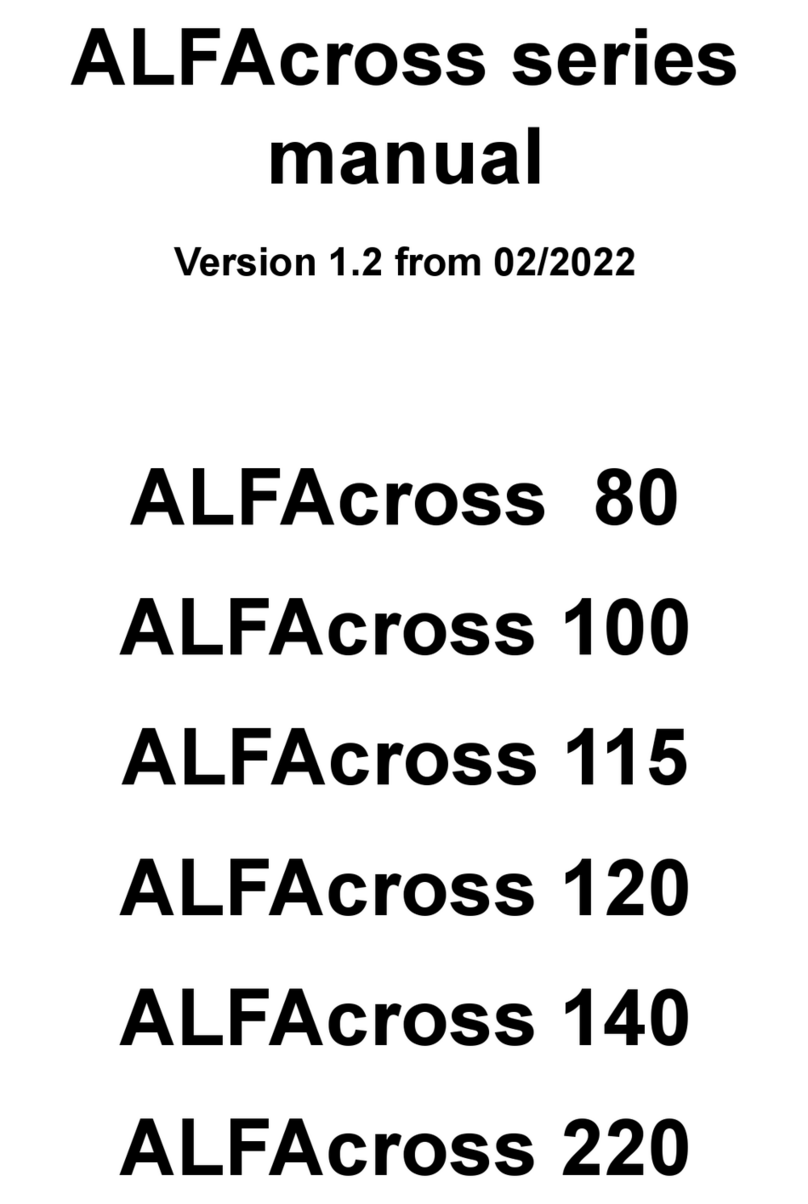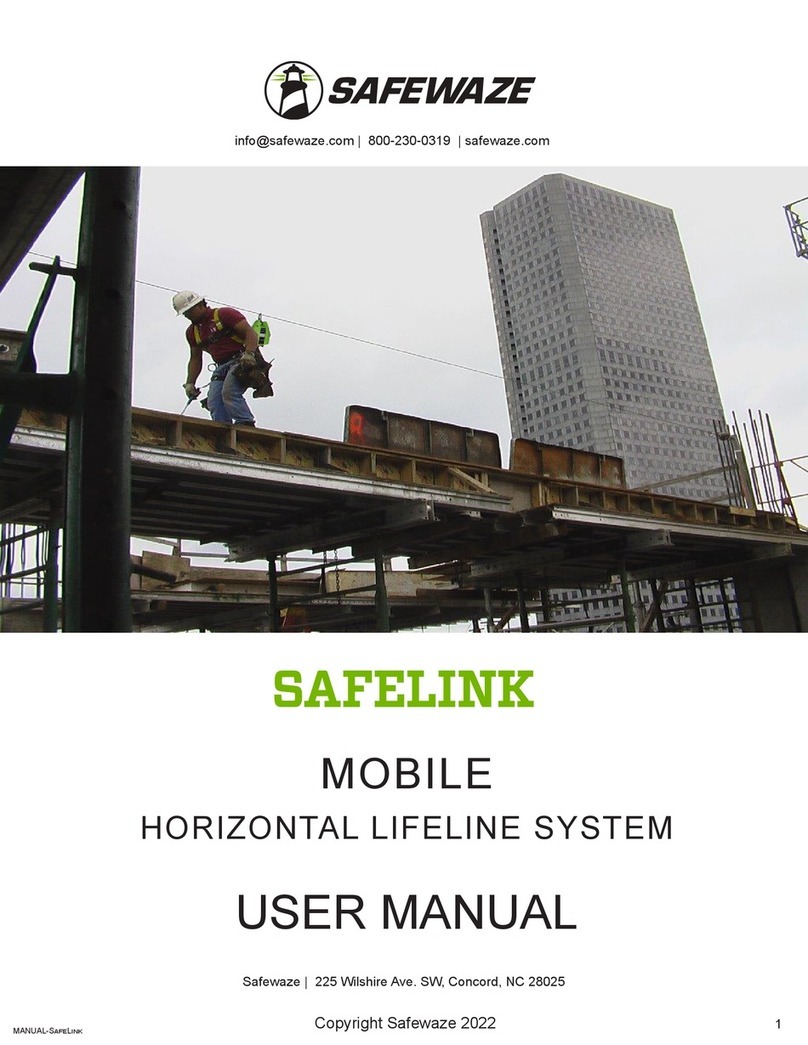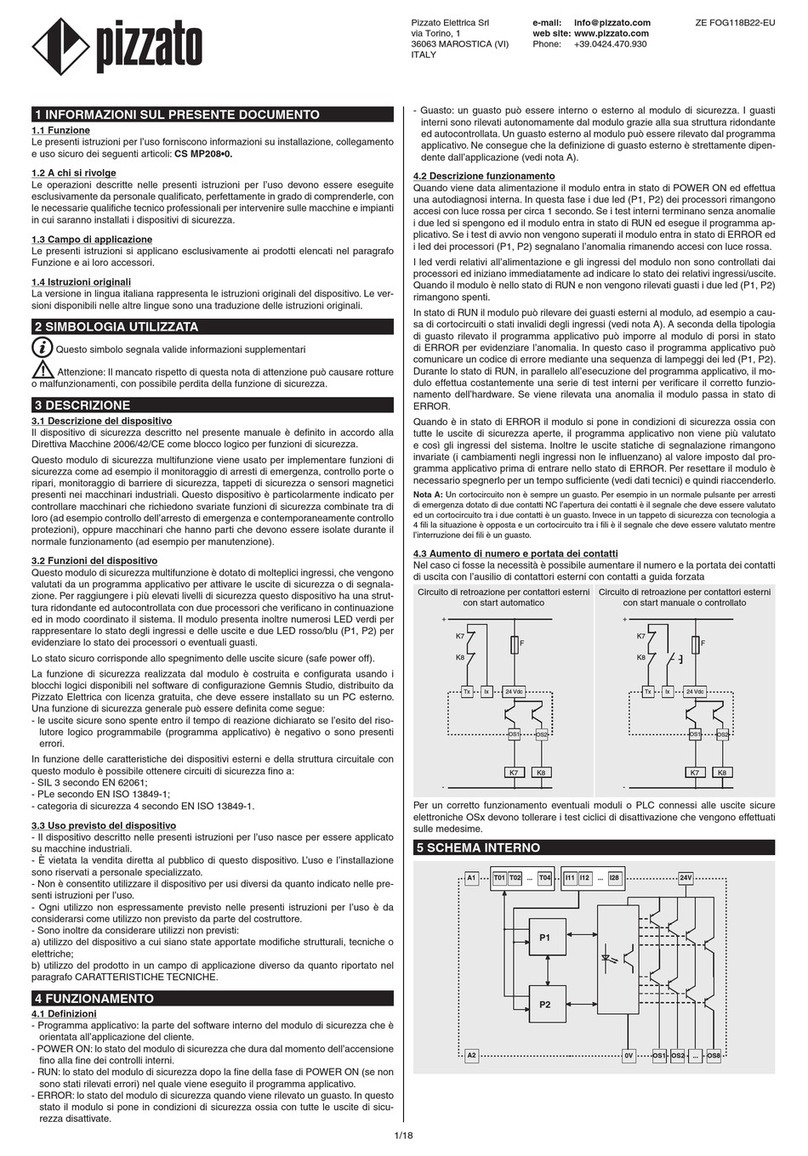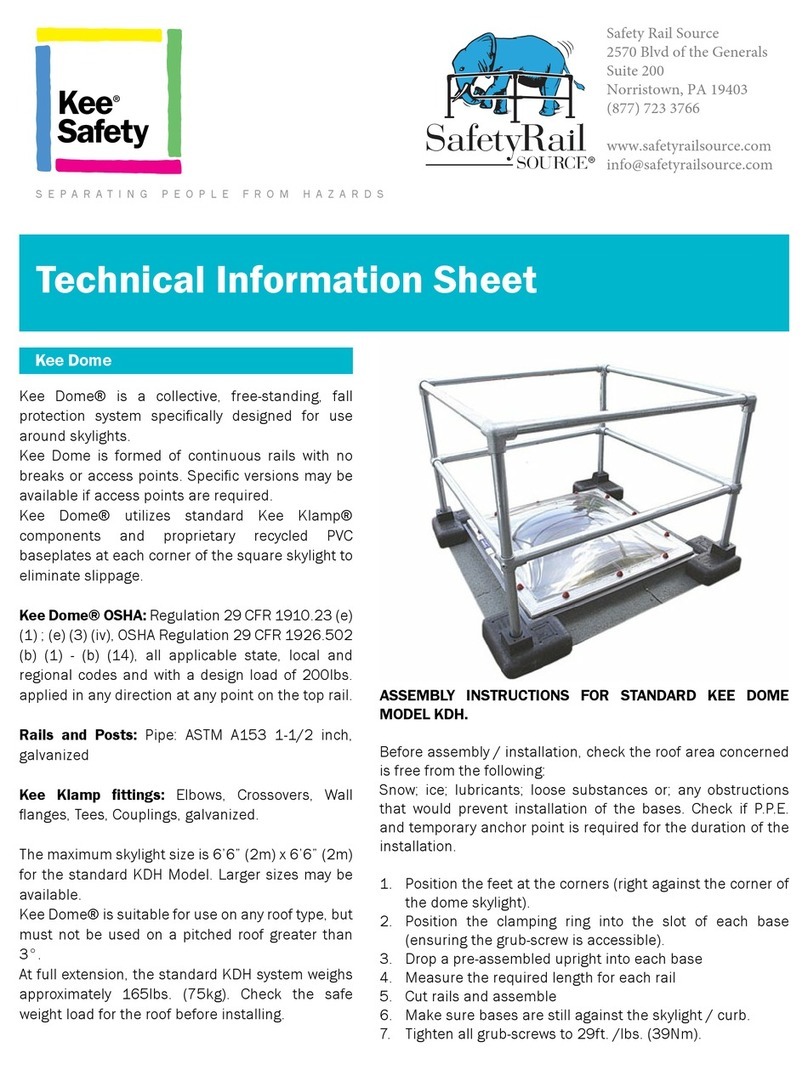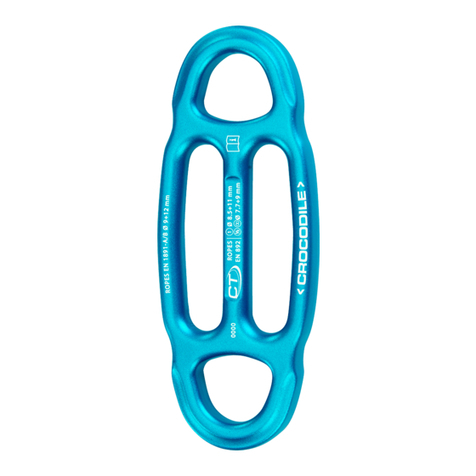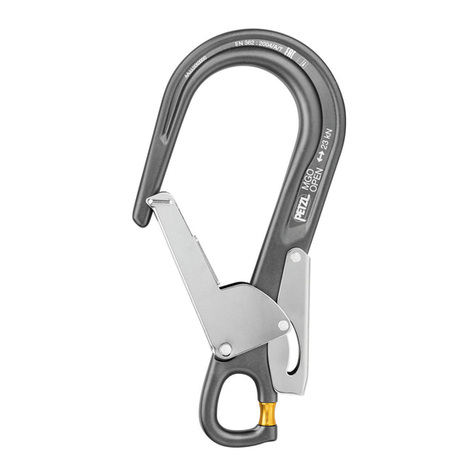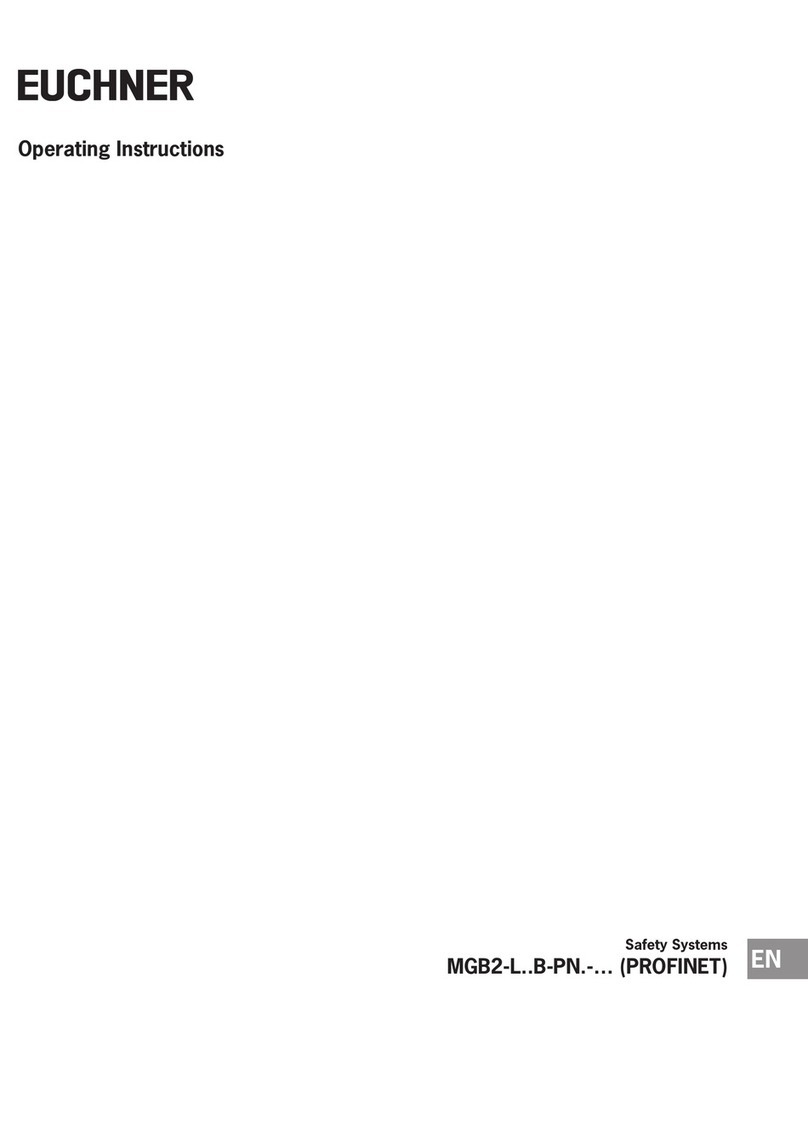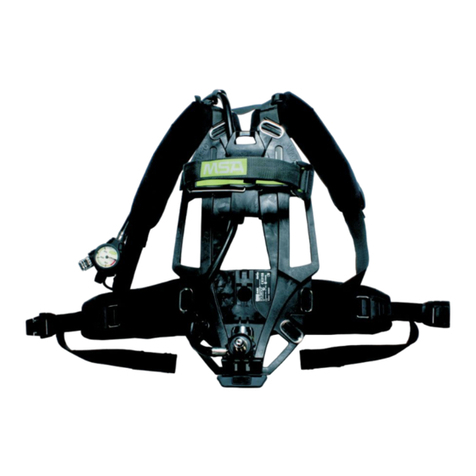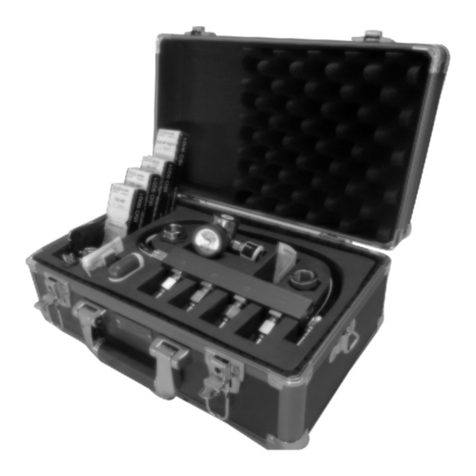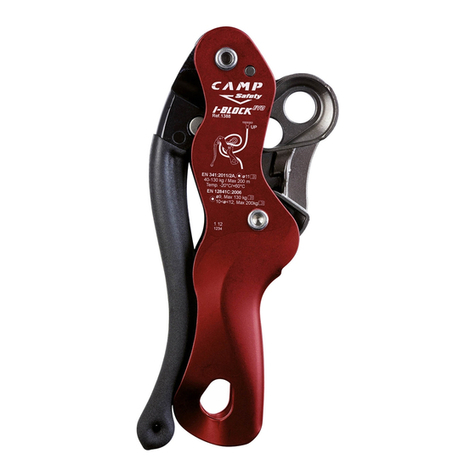Fluggeräte ALFAcross 100 User manual

User Manual
Rescue System
ALFAcross*100
EP 218.2018
LTF / EN 100 kg
The contents of this manual were written with due diligence and by Fluggeräte G.m.b.H best knowledge. The
Fluggeräte G.m.b.H reserves the right to change or delete contents of this manual. Al content of this manual,
text and photos are subjekt to copyright laws.
Text by Josef Gasteiger, Layout /Graphik by Frank Gasteiger and Tobias Albert
Version : Mai 2018 office@gleitschirm-retter.at *** www.gleitschirm-retter.at

Page 1
Table of Contents
Table of Contents..................................................................1
Foreword...............................................................................2
Get to know your ALFAcross*100.........................................2
What to do when it happens?................................................4
Technical Data / Material List................................................5
Packing Instructions..............................................................6
Remove the line from the fixing loops!..................................8
Connection the ALFAcross*100 with the harness...............10
Parts and items ...................................................................11
Compatibility- check............................................................11
Care, maintenance and repair.............................................11
Use limitations, packing- and check intervals .....................12
Terms of the guarantee.......................................................12
Verification of Checks and Repairs.....................................13
Description of the rescue system........................................14
Maintaince and Pack-Interval Overview..............................14
Name and address of the manufacturer..............................15

Page 2
Foreword
Congratulations on buying your
ALFAcross*100 rescue system
Before you get to know your system please read the
manual which includes important information.
This manual gives you information on the entire specific and general characteristics of the
rescue ALFAcross*100.
All technical data and instructions in this manual were drawn up with great care.
FLUGGERÄTE GmbH cannot be made responsible for any possible errors in this manual.
Should you decide to sell this rescue system at a later date, please pass on this manual to
the new owner.
No guarantee of any kind can be made against accidents, injury, equipment failure, and/or
death. It is assumed that the pilot is in possession of the necessary qualifications and
provisions of any relevant laws are observed.
The use of this rescue system is entirely at your own risk.
Every pilot bears the responsibility of his/her own safety. The manufacturer or distributor
assumes no responsibility for accidents occurring while using it.
It is strictly prohibited to use the ALFAcross*100
beyond the maximum recommended weight
for skydiving
with damaged canopy, lines, connection belt or seams or
without regular check (check interval).
WARNING:
The rescue system is not suitable for speeds
in excess of 32 m/s (115 km/h).
Important information in this manual is written in bold font.
Any important changes to this manual will be published on our website
www.gleitschirn-retter.at
Every pilot must ensure that the rescue system is properly checked at regular intervals.

Page 3
Get to know your ALFAcross*100
Technical data
Area (m²) 32,20
Number of cells 20
Weight including container 0,985kg
Weight without container ) 0,939kg
Maximum Volume packed (cm³) 3500
Maximum load weight (kg) 100kg
Middle line 1
Sinkrate with max. weight (m/sec) 5,20m/sec
TEST AND HOMOLOGATE : EP 218 2018 LTF/EN
AIR TOURQUOISE SA CH-1844 VILLENUEVE
The ALFAcross*100 is a manually deployable rescue system it is for suitable paragliding
pilots in an emergency situation and is made by high quality light materials and has a
quadratic canopy with one middle line which pull down apex.
Rescue systems from FLUGGERÄTE GmbH are characterized by a high level of reliability
and maximum material strength. Fastest inflation while maintaining moderate sink rates are
features of these systems.
The material is air permeable, strong nylon. There are bands sewn into the main seams to
strengthen the canopy. The base and side edges are reinforced with bands. The apex is
pulled. The lines are grouped into a strap. This strap generates the connection between
rescue system and harness.
The rescue system is sewn to NATO standards which means that all rescue systems are
sewn by professionals and delivered only after inspection and approvals.
The specially designed inner container prevents the lines cannot get caught up in the cap
and the opening speed is accelerated with this inner container.
When using a different inner container, it is
important to ensure that the rescue system can
be thrown without problem.

Page 4
What to do when it happens?
If you find yourself in an uncontrollable situation in the air, pull hard on the deployment
handle. This will open the outer reserve container and release the reserve parachute. Then
throw the reserve package forcefully away from you. As the suspension lines become tight,
the container will fall away and the reserve will open.
If your glider is rotating it pays to throw the reserve against the rotation as this will speed up
the inflating process. If you have had a collision and find yourself entangled with someone
else’s glider tries to make sure you don’t throw the canopy into the entanglement, as this will
delay the opening.
When you are flying recurrently grab the position of the handle
so you can find it in an emergency!!
If you have enough height, first try to resolve the problem and
stabilize the rescue as far as possible
(danger of screwing of the bailout).
If you have not enough height don´t hesitate for
pulling the rescue.
Do not forget to unhand the rescue handle!

Page 5
Technical Data / Material List
MATERIAL LIST: FABRIC UTT USKY212
LINE LIROS DC-PRO 505-225
CENTER LINE AURA R 400
AURA R 270
MAIN RAISER LIROS 1505-500-205
WEBBING GÜTH & WOLF 12,50mm + 9,50mm
PRODUCING: CONDOR SA BUKAREST ROMANIA

Page 6
Packing Instructions
Packing preparations
Before you pack the rescue system it is important that the canopy is spread out on the
ground for about six hours.
If possible, it would be even better to air it one night long by hanging it up by the top lines.
Before the rescue system gets packed, a release control must be carried out. The release
force should be between 50 and 80 N.
Pulling the packing line trough the fixing loops
To help you pack the rescue system, use a short piece of old paraglider line and thread it
through all the apex fixing loops. The fixing loops are sewn on the canopy.
Attach the line to a stable fixed point. Sort out the suspension lines.
Take line 1 and the last one (20) stretch the lines so they are running parallel to the main
strap and make sure that the middle line is in the middle and the other lines to the side.
There should not be any tangles or knots in the lines.
All lines must have a straight course and may not have any twists.

Page 7
Sorting the panels
Take the lines in your hand as shown on the photo
and fold over each panel from the left side on to
right side like turning the pages in a book and pull
the top of the opening outward.
Start with panel 1, the last one is panel 20.
Now you can see the opening of panel 1.
Fold the opening like a triangle.
Sort the next panels to the left side until you see
the opening of panel 16. Fold it like panel 1.
Do the same up to panel 11.
Now fold all panels from the right side to the left. Put the first five panels to the right side until
you can see the opening of panel 6. Fold the opening like a triangle.
Afterwards fold the following panels to panel 10 on
the right side. When you see panel 11 fold the last
of 4 triangles.
Afterwards check both sides.
On each side there must be 10 panels.
Check the lines. You can divide the lines in to three
parts on the left, one to the right and the middle
line.
All lines must have a straight course and may
not have any twists.

Page 8
Remove the line from the fixing loops!
Folding the canopy into thirds
The left third is folded onto the middle and then the
right third is folded under the middle. Do the same
on top of the canopy.
Fold the protruded triangles and pay attention to
the size of the container!
S-folding canopy to fit into inner container
Fold the canopy in “S” folds from the top right down to the base, so that it fits into the inner
container.

Page 9
Now is the last time to remove the helping line from the fixing loops!
Now put the canopy into the inner container. Close both sides of the inner container with the
white rubber band and pull the suspension lines through the rubber band for closing.
Fold the suspension lines using two fingers in “S” bundles and fix with special rubber bands.
These are special rubber bands which you can buy from the manufacturer and you
must novate it after each time you repack.
Use the last 50 cm of the suspension lines for the final closing of the inner container.
Place the folded suspension lines into the pocket as shown.

Page 10
With the rest of the suspension lines you finalize the closing of the inner container by pulling
the suspension lines through the black rubber loop. Now the packing is finished.
Make a note of the date of packing in the pack control booklet.
Installing your rescue handle
Most harnesses have a handle for the harness containers. This handle must be connected to
the inner container.
The inner container of ALFAcross*100 rescue systems has two loops, in which the handle of
the harness can be attached (center, side).
Handles for front and back containers are generally suspended in the central loop, container
on side or under the seat, the side strap used.
Note the instructions for the rescue unit in the operating instructions of your harness.
If there is no handle of the harness or it does not fit with your inner container, please
ask the dealer of your harness or your paragliding school.
The handle must be firmly connected to the loop on the inner container (opening
strength < 70 N).
Connection the ALFAcross*100 with the harness
When fitting the ALFAcross*100 in the harness/front container, make sure you follow the
harness manufacturers instructions. Perform a complete system compatibility test. This test
must be undertaken by a suitable qualified person.
PRE FLIGHT CHECK: In addition to the normal pre-flight check( see operating instructions of
the harness) the proper closure of the rescue container and the correct location of the
deployment handkle must be checket before each take off. If the bridle is disconnected after
every flight ( for example, on a front-mounted container system) the pre-flight check must
also include the correct attachment of the bridle.

Page 11
Parts and items
The elastic bands (gummi) you can get them free from the Fluggeräte G.m.b.H
Compatibility- check
A control of every new combination of rescue system and harness/outer container has to be
carried out by either the producer of the harness or the rescue system or an authorized
person (dealer or flight instructor). The activation of the rescue system in flight position has to
be correct and in conformity to the construction guidelines.
The check has to be recorded in the documentation of the rescue system. The
throwing movement should be practiced every time the rescue system is repacked.
IMPORTANT POINTS TO LOOK OUT FOR:
Check (regularly)
connection of the rescue system to your harness
connection of the harness and deployment handle
helping line from the fixing loops is removed (after each packing)
Check compatibility of rescue system and harness
Before each start with your paraglider you have to check the
container is closed!!
Care, maintenance and repair
Care Instructions
Please do not store your rescue system in the vicinity of acids, grease, oils or paint. To
ensure safe operation, the system needs proper maintenance and care.
Do not store your rescue system in extreme temperatures or humidity
(more than 30°C 0r 55-65% humidity).
A humid or wet canopy needs repacking.
Exposure to UV-rays causes deterioration of the fabric.
Please only use clean and fresh water to clean your rescue system or container.
Wet cloth stored in warm conditions will begin to mould and significantly lose structural
strength. Rescue systems in this condition must be brought to the manufacturer to be
checked.
It may take several days to dry out the rescue completely especially the lines of the
rescue system, which take longer than the fabric.
Do not fold and store your rescue system prematurely if it not completely dry. Mildew
may damage your harness and your rescue system.

Page 12
Repairs
The seal of approval can only be preserved if original parts are used. If you discover
any damaged parts to the rescue system which might impede deployment, please end
it back to the manufacturer to get repaired.
Repairs can only be carried out by the manufacturer or from the manufacturer
authorized persons.
Use limitations, packing- and check intervals
Packing interval
6 to12 month; the rescue system also must be aired recurrent
Check interval
2 years. if the rescue system was opened after a flight accident, the rescue system must
be checked.
Without regular certified inspections, your rescue will lose its pattern test result and
guarantee.
Use limitation
Our rescue system ALFAcross*100 has a lifer span of 15 Years by
observance of the regulations for packing and checking. Certification is no longer
valid thereafter.
The certified life span can be extended by a further three years, if the rescue
system is checked by the manufacturer..
Important: Packing and checks of the rescue system must be documented otherwise
guarantee is cancelled.
Terms of the guarantee
Fluggeräte GmbH guarantees the proper processing, an operation within the allowable limits
of proper operation and the fulfillment of the eligibility criteria of rescue.
What is not covered by the rescue guarantee?
which have been changed by yourself,
that were not purchased from an authorized dealer / flight school,
where the required inspection intervals were not met and the verification
of the rescue system was not conducted by a Fluggeräte GmbH
authorized operation / person
which has occurred due to improper treatment (i.e. storage in humidity,
heat or direct sunlight)
caused by solvents, salt water, insects, sun, sand or humidity
caused by force majeure.

Page 13
Verification of Checks and Repairs
ALFAcross*100
Serial number: ……………………….……………
First check by Fluggeräte GmbH / date:
….…………………
………………………….
Name/ Stamp
Check (C)
Repair (R) Which repair/ Check?
Check valid until? Performed by/ date
Check (C)
Repair (R) Which repair/ Check?
Check valid until? Performed by/ date
Check (C)
Repair (R) Which repair/ Check?
Check valid until? Performed by/ date
Check (C)
Repair (R) Which repair/ Check?
Check valid until? Performed by/ date

Page 14
Description of the rescue system
Middle lines
basic
Suspension lines
Main belt
Top (pulled down apex)

Page 15
Maintaince and Pack-Interval Overview
DATE WORK USED OPEN RESULTS Signation by
It is compelling advised to check and repack the rescue
ALFAcross*100 every 6 months.
In the case of ignoring this, there might be problems
with opening time of the rescue.
Name and address of the manufacturer
Fluggeräte G.m.b.H.
Josef Gasteiger
Hütte 30
6345 Kössen
AUSTRIA
+43 664 / 20 12345
www.gleitschirm-retter.at
Table of contents
Other Fluggeräte Safety Equipment manuals
Popular Safety Equipment manuals by other brands

Scott Safety
Scott Safety CONNECT QUEUE manual

KAPPLER
KAPPLER Frontline 500 User information

JSP
JSP FAR0812 INSTRUCTIONS ON USE, CARE AND INSPECTION
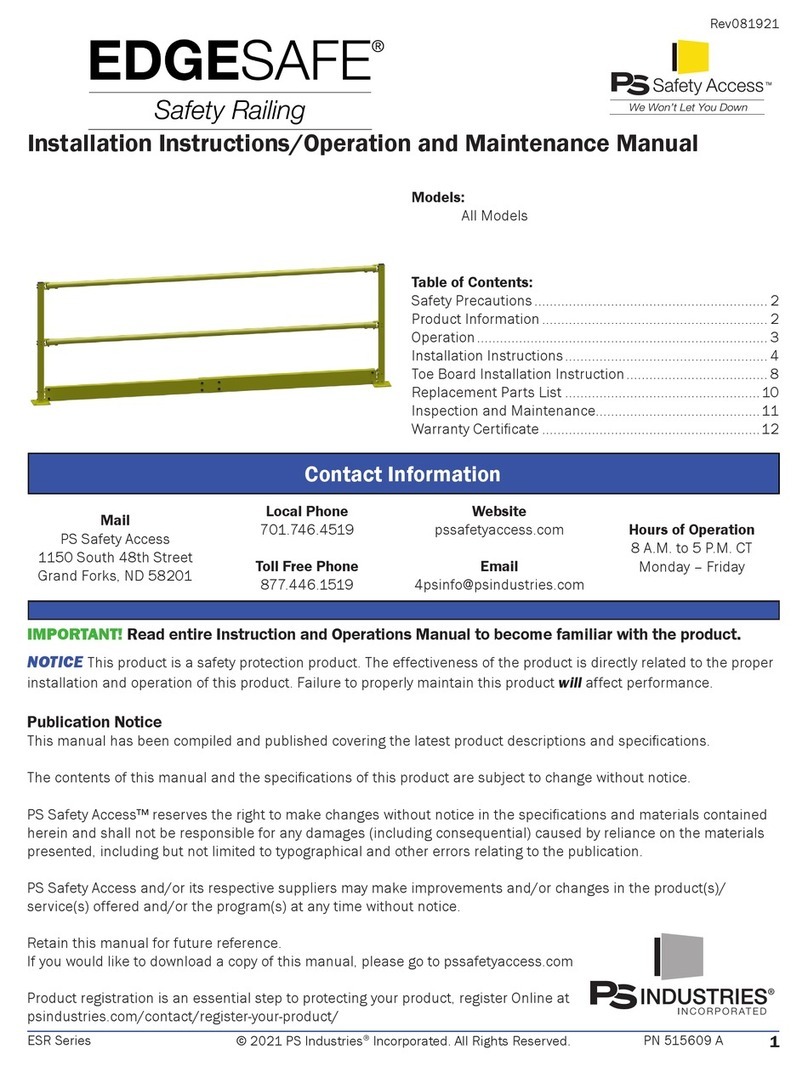
PS Industries
PS Industries PS Safety Access EdgeSafe Series Installation Instructions, Operation and Maintenance Manual

LAHTI PRO
LAHTI PRO L1520600 user manual

IKAR
IKAR HRA Series Instructions for the use and inspection records
